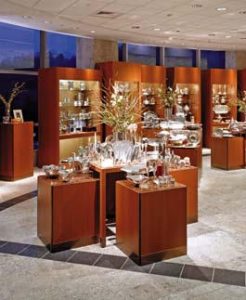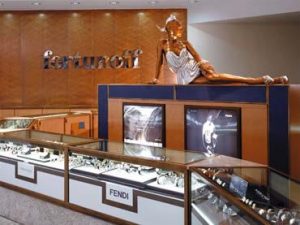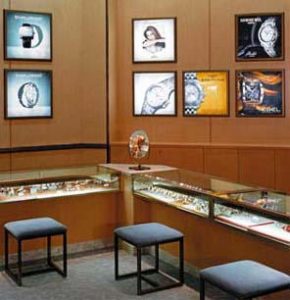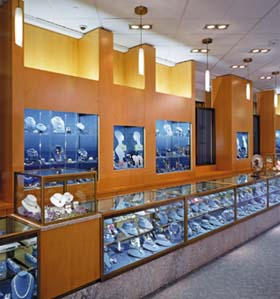Not every chain retailer has a direct descendant of the founders intimately involved with every decision of an ambitious new store.
The new Fortunoff store in White Plains, N.Y., (a former Saks Fifth Avenue site) represents just such an unusual involvement. The jewelry and housewares retailer's director of store design is Andrea Fortunoff, the registered architect whose family name is over the door. And who could know what Fortunoff and its customers need better than Andrea who, she recalls, “wrote my first inter-office memo at five years old and used to work in the stockroom as a kid”?
The result is a stellar case study of design-for-longevity. While the shopping experience is pleasant-but-unassuming, the deliberate lack of flash reflects choices in favor of durability and timeless style. The 82-year-old jewelry and housewares chain believes in the amortized economy of custom fixtures. Cases in some older locations have lasted over 20 years – and then only replaced in the context of a redesign.
Andrea's wish list was for this store to be appealingly classic and comfortable for the affluent clientele. But it also had to be easy to maintain and reconfigure, with minimal disruptions. And in the 17,000-square-foot department devoted to jewelry, watches, clocks, flatware and holloware, she wanted to integrate the design with the rest of the store, but needed casework and traffic flow to accommodate the exhaustive merchandise selection.
Knowing what she wanted, she hired GRID/3 Intl. (New York) to design the department. GRID/3 principals Ruth Mellergaard and Keith Kovar, in turn, decided on wood veneers for the department, to provide some color-code demarcation (cherry for frames/hollowware, maple for jewelry). And merchandise categories are clustered around columns clad in a unique combination of a metallic fabric-enmeshed glass over gilding that provides an elegant background shimmer.
The area is located on the corner of the lot with floor-to-ceiling windows pouring in plenty of natural light. Knowing that silver is a popular department and that sunlight has a naturally enticing pull, GRID/3 arranged sightlines and cases to encourage customers to wander through the floor at a 45-degree angle off a major aisle toward the silver area, which is located by the windows at the opposite end from the entrance.
Advertisement
Many design decisions allow the store to preserve its good looks over the long-term. For example, the jewelry department is one of the rare places that sells high-end diamond necklaces on aisles large enough for supermarket-style carts. To prevent damage to the casework, all of the display cases and cubes have discrete metal bumpers. (On the glass cases, those bumpers serve double duty as part of the security system.) In the silver/ flatware/clocks area, the corners of the pedestals are reversed concave and lined with metal that looks like a dash of deco but protects the wood veneers from errant cart navigators and protects active kids from sharp corners.
To avoid wear-paths in high-traffic areas, Fortunoff used a customized carpet tile – unpadded to make pushing carts and strollers easier. Because the pedestals are moved more often in the flatware/clocks/frames area, that floor is a stone tile “that was chosen because it looks like marble,” says Fortunoff, “but is actually granite, which is harder.”
The floor's core sparkles with diamond cases. The area is highlighted by brighter white light from special metal halide lamps, called E.Y.E., that Fortunoff sourced from Japan. “A lot of metal halides wash out skin tones, but these don't,” she notes. “You want the customer to look great when she's trying things on.”
The lights are set in an Armstrong ceiling system that is a sectional recessed trough that provides more flexibility than built-in fixtures in a drywall-finished ceiling and avoids what Fortunoff calls that “messy forest-of-track look.”
Lamping played a big factor in the case design. Sufficient brightness was a concern because Fortunoff's cases are 2 inches deeper than most jewelers' cases and displays are three shelves deep, as opposed to the typical two. While pinpoint halogens are popular these days, Fortunoff prefers her custom two-tube fluorescent fixtures. Not only are they more cost-effective, but they're also easier to relamp, have longer life, permit brightness without shadows, are more energy-efficient and emit less heat, so the cases don't need vents or fans. That's not only a security bonus but also prevents cracking opals, ruining glass enamels and burning salespersons and customers from hot spotlights.
Because the jewelry cases are opened and closed approximately 200,000 times a year, Fortunoff had the security locks custom-built with extra heavy-duty pins. And because women employees complained that the old square handles broke their nails, the new ones are rounded to be more manicure-friendly.
Advertisement
As in many other areas of designing a store, Andrea Fortunoff understands all the problems.
Client: Fortunoff, White Plains, N.Y.
Design, Jewelry/Silver/Holloware/Clocks Department: GRID/3 Intl. Inc., New York
General Interior Design: James Harb Architects, New York
Outside Design Consultants: Horton Lees Broden, New York (interior lighting)
US Lighting, New York (exterior lighting)
Edwards and Zuck, Stamford, Conn. (MEP services)
Walker Parking, Boston (parking garage)
General Contractor Interior: Shawmut Design and Construction, Boston
Advertisement
Ceilings: Armstrong World Industries Inc., Lancaster, Pa.
Fixtures: Fred Bauerschmidt and Sons, St. Albans, N.Y.
Metalworks, Corona, N.Y.
Flooring: Armstrong World Industries, Lancaster, Pa.
Innovative Marble and Tile, New York
InterfaceFLOR, New York
Kristone, Roselle Park, N.Y.
Pyramid Flooring, New York
Walker Zanger Inc., Mount Vernon, N.Y.
Glass: Archetype Frameless Glass Inc., Harrisburg, Pa.
Bendheim Glass, New York
Intercounty Glass, Lindenhurst, N.Y.
McGrory Glass, Aston, Pa.
Lighting: Lido Lighting Inc., Deer Park, N.Y.
Mannequins and Forms: Adel Rootstein USA Inc., New York
, New York
Rixford Studio, New York
Michael Southgate, New York
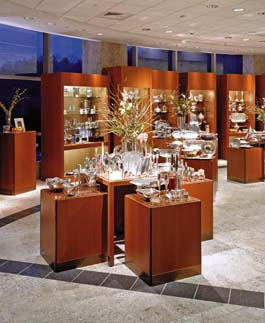

 Headlines7 days ago
Headlines7 days ago
 Headlines2 weeks ago
Headlines2 weeks ago
 Headlines2 weeks ago
Headlines2 weeks ago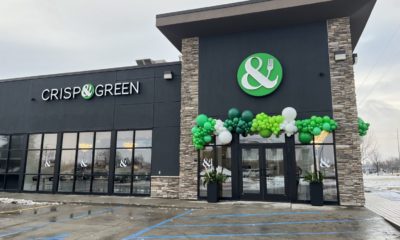
 Headlines2 weeks ago
Headlines2 weeks ago
 John Ryan2 weeks ago
John Ryan2 weeks ago
 Sector Spotlight1 week ago
Sector Spotlight1 week ago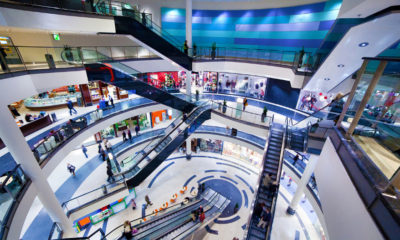
 Headlines2 weeks ago
Headlines2 weeks ago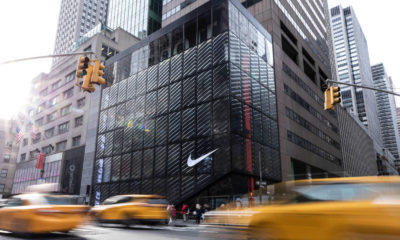
 NEXT UX2 weeks ago
NEXT UX2 weeks ago
